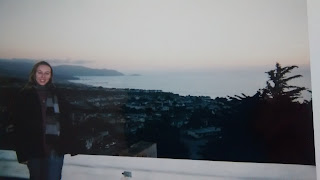 |
| Pacifica, California overlooking the Pacific Ocean. |
Hearing the words ‘shadow program’ one might think of secret governments or mutated super men, but in California and twenty-three other states, the term applies to a water usage program that’s much scarier. Back in the 1980s the EPA started “an underground disposal program that allows toxic substances to be disposed of in nearly 700,000 waste wells across the country”
[U]nder concessions won by the oil
industry and inserted into federal law, oilfield production waste — including
chemicals known to cause cancer and fracking materials — are not legally
considered ‘hazardous,’ a term with a specific definition in federal
environmental law. According to the California Department of Conservation,
which regulates the state’s oil and gas industry, “drilling mud filtrate,
naturally occurring radioactive materials (NORM), slurrified crude-oil,
saturated soils and tank bottoms” are all allowed to be injected into aquifers
as “non-hazardous” material.
These wells appear all over
California, from Bakersfield to Paso Robles and cover hundreds of miles. The
Kern Water Bank, “one of the state’s largest underground water storage
facilities [and] relied on by California farmers” (Lustgarten, 2016) is situated above at least one of the
new proposed exemption sites. Opponents of the exemption program want tougher,
more thorough laws and regulations focusing not only on the exemption location
itself, but a broader more holistic view as to how it fits in to the larger
environmental scene.
References
Lustgarten, A. (2016, September 5). The Golden
State’s water crisis: California and EPA poised to expand pollution of
potential drinking water reserves. Retrieved from Salon:
http://www.salon.com/2016/09/05/the-golden-states_partner/
No comments:
Post a Comment